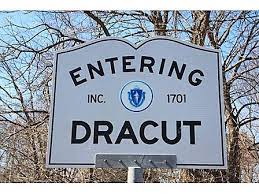 by Phil Thibault
by Phil Thibault
Now that is a question.
As an architect, I have been on both sides of the debate for both philosophical reasons and profit. I was recently asked to be on a design team for a 40B project in an area that I am well acquainted with, and the area residents well acquainted with me. I spoke with one of the abutters regarding my accepting the offered commission. Their feelings were mixed. Knowing that the neighborhood would be changing, they said “someone is going to get paid to do the work.”
Not really a rousing endorsement of my varied portfolio, but I understand their surrender to a perceived inevitable. Change is inevitable, but change can be managed. In communities that try to hold the tides at bay, they are consumed by lament. I have always mentored to my staff that changes requested by client, consultants, and yes municipal authorities, “this is our opportunity to shine.” Let us step up to the challenge.
 Municipalities should be less confrontational to the prospective developers and other organizations approaching the community with a proposal to provide housing under the Chapter 40B comprehensive permit. I will wait for the jeers and groans to stop…. I by no means am suggesting that the any town of city open the flood gates. I want these communities to admit there is a flood at the gates. Dracut by market pricing is an affordable place to live. Affordable for the purpose of Massachusetts 40B requirements must be subsidized by the federal or state government.
Municipalities should be less confrontational to the prospective developers and other organizations approaching the community with a proposal to provide housing under the Chapter 40B comprehensive permit. I will wait for the jeers and groans to stop…. I by no means am suggesting that the any town of city open the flood gates. I want these communities to admit there is a flood at the gates. Dracut by market pricing is an affordable place to live. Affordable for the purpose of Massachusetts 40B requirements must be subsidized by the federal or state government.
In this case, Dracut falls far short of having “affordable” housing. Only five percent of Dracut’s housing stock qualifies, while the state looks for ten percent. Frustratingly a quarter of Dracut residence need affordable housing. Many are “house poor,” a term when most of their living income is used for housing. Dracut has been very “Yankee” at keeping the government at arm’s length; however, Dracut has provided the state with Housing Production Plans that outline a schedule of providing for “affordable” housing over the next few years. The Master plan completed in 2020 also provided guidance to the desire for “affordable” housing. The town remains stagnant. Currently Dracut is undertaking a complete rewrite of its zoning bylaws and there are discussions regarding affordable housing and inclusionary zoning. Inclusionary zoning would require any new subdivision of a particular size to provide for “affordable dwelling” as part of the approval. Many communities have similar requirements, and it helps in maintaining the percentage of affordable dwellings as new market rate dwellings are constructed.
Developers and contractors should stop using the Chapter 40B as a threat to municipal boards and neighbors to coerce an approval for a project. I find this a most detestable terror. I have seen this nuclear option for more times than I care say. It often time leads to a new development that is designed and constructed in spite. I realize that development is a business. The business should be in dignified housing; otherwise, we are only creating slums devoid of respectable human habitation. Spite does not cultivate dignity.
 The design professionals that are engaged by their clients to create these new neighborhoods need to design for livability. Many designs are started with a road to access all areas of a parcel and draining stormwater. Buildings are placed along the roadway where access for cars and garages are the most efficient. Landscaping is littered around the site to hide utility boxes, and other unsightly required accessories. You may have noticed that I have yet to mentions people. They are seen as the buyers, as if, they only buy They need not live there. George Bailey knew that the people who did “most of the working and paying and living and dying” in the community deserved to have a couple decent rooms and a bath.
The design professionals that are engaged by their clients to create these new neighborhoods need to design for livability. Many designs are started with a road to access all areas of a parcel and draining stormwater. Buildings are placed along the roadway where access for cars and garages are the most efficient. Landscaping is littered around the site to hide utility boxes, and other unsightly required accessories. You may have noticed that I have yet to mentions people. They are seen as the buyers, as if, they only buy They need not live there. George Bailey knew that the people who did “most of the working and paying and living and dying” in the community deserved to have a couple decent rooms and a bath.
I know that I have offered little in the way of solutions to the affordable housing issue. Honestly, the answers have dichotomies to baffle the wisest sage. Communication is the only answers I can offer. The developers and municipalities should have an open dialogue about the project and the potential impacts for the investment of each. The abutters and developer need to communicate expectations of the project. Design professional need to communicate with their clients about dignified designs for people. The municipalities and the state need to communicate the impact of legislation on the governed. Without communications we are only whistling past the graveyard.













3 responses to “InsideDracut: To 40B or Not To 40B”
The only people that benefit from 40B are developers and their assorted hanger ons. Open Space gets destroyed. Roads clog. Schools get crowded and their bloated costs are passed on to the people that once lived in a quiet town and now live in a suburban sprawl with cookie cutter plastic covered ugly ass town houses. Growth isn’t neccessary or beneficial or the only way. This gov’t intervention into housing inflates rents in urban areas and let’s huge 100 unit condos go up with 20 low income units in the burbs It’s a scam between developers and their locust like business and all those at the trough that benefit…
Bach, all the points you make are present absent 40B projects. Still affordable housing is lacking. Certainly Chapter 40B is not the only solution, but it is a tool that can be used by both developers and municipalities to a desired effect. There is a 40B project from 30 years ago in Dracut that is referred to as a neighborhood. Lack of a diverse housing stock is the reason for high costs. Simply supply and demand.
Developers may not jump to 40B projects if zoning were more flexible and reflected the reality of demand. Additionally, it would be interesting to see how much the cost of building has risen as a consequence of burgeoning regulatory requirements just over the last decade or so. Finally, the savings for those who get the lower income units has to be borne by those who don’t, and I wonder whether anyone has studied how much, if anything, 40B has achieved in the long haul. I doubt it. Government likes to craft “solutions” and never check to see if they accomplished anything, lest the answer be “no”.